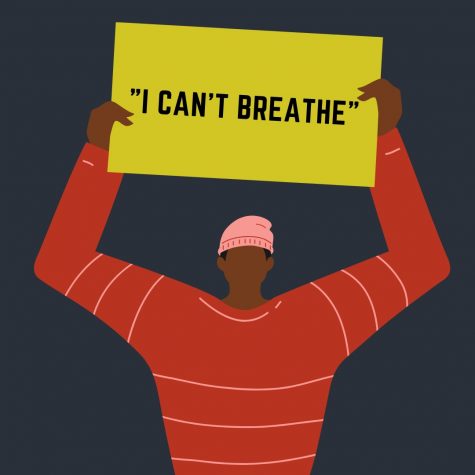SKEPTICAL SCIENCE SUNDAY: Where is Science in the Gun Debate?
In the wake of America’s latest mass shooting, there’s a lot of discourse surrounding gun violence. But where is the science?
February 25, 2018
After I heard the news of what happened in South Florida last week, I, like many others, was outraged. I have lived to see a number of incidents like this, and yet it doesn’t seem to get any less horrifying to watch news reports of children not even old enough to drive being killed by some angry dude with an AR-15. Throughout the past few days, my Facebook feed has been filled with calls to action: We can’t let this happen again. Thoughts and prayers aren’t enough. We need change, we need gun control, we need better mental health care, we need armed guards and metal detectors at the entrance to every school in America. Everyone has an opinion on what we can, should, or shouldn’t do to stop tragedies like this from occurring. But whose opinion is right? What can we do?
Some will say bringing back the ban on semiautomatic weapons is the answer. Considering how many mass shooters have obtained their guns legally, and how much the rate of mass shootings has increased since the previous ban expired in 2004, this is a reasonable argument. Others claim, however, that mental illness is the true culprit behind gun violence, and tightening background checks to keep deadly weapons out of the hands of the mentally ill is sufficient. Some would rather introduce even more guns to the equation, calling for teachers to be armed in case of a school shooting. And still others continue to claim video games as the root cause of violence, despite years of scientific evidence to the contrary. (In fact, Stetson Psychology professor Chris Ferguson has plenty to say about that particular myth.)
But speaking of science, since this is a science column, I had hoped to write a piece on the scientific research on mass shootings. I wanted to look at studies that might tell us what works and what doesn’t, so that maybe we can see what needs to be changed. I wanted to, but what I found instead was a shocking lack of research on an epidemic that causes more deaths per year than HIV. If our scientists can find the best cures and treatments for diseases like cancer, AIDS, diabetes, and asthma through rigorous research, why can’t we do the same for gun violence? Former CDC director Dr. Mark Rosenberg asks that same question, and sadly, the answer is complicated.
Pro-Second Amendment groups like the NRA have actively fought against research into the causes of gun violence. They believe that such research will contribute to “anti-gun propaganda,” providing fodder for gun control lobbyists to restrict legal access to firearms. The result of their panic was a 1986 edict known as the Dickey amendment, prohibiting the use of federal funds for gun control advocacy on the part of the CDC. It sounds innocuous enough, but this amendment began a progressive reduction in federal funding and agency support for the CDC’s research on gun violence. A 2003 review of the literature on gun violence in the U.S. was almost entirely inconclusive, because since the passing of the Dickey amendment, gun violence research had all but ground to a halt.
Fortunately, while this research continues to be underfunded and fought against, it hasn’t been banned outright, and many scientists are doing their best to empirically study this widespread issue. In recent years, research on causes and prevention of gun violence has picked up, slowly but steadily. Several large studies conducted in the later 2000s and 2010s have looked at gun laws across the world in order to determine what works and what doesn’t. And what they’ve found is intriguing.
A large-scale survey on gun laws conducted in 2016 looked at the opinions of experts in criminology, law, and public health, as well as average Americans. It then ranked various potential gun control laws on two axes of expert support and public support, resulting in a remarkably easy-to-read graph of what laws are most likely to meet both public approval and actual success. Among the most highly ranked by both groups is the imposition of tighter restrictions on who is allowed to purchase guns, keeping them out of the hands of suspected terrorists, violent criminals, and the mentally ill. These results are consistent with new research that demonstrates a strong association between tighter background check and permit laws in the US and a reduced rate of gun violence. (However, it’s worth noting that the same study found much weaker evidence for effects of semiautomatic weapon bans and other gun control laws.)
This line of thinking does bring up a different question, though: how culpable is mental illness really? While mental illness does show an association with violent crime, the effect is small, and overall not as important as many people think it is. The majority of mentally ill people are not violent, and the majority of violent criminals are not mentally ill. Additionally, violent acts committed by those with severe mental illnesses tend to be disorganized and sporadic, not planned out like the mass shootings we hear about in the news. While knowing the risk of violence is important in maintaining the safety of mentally ill patients and their families, it has little relevance in the gun control debate. However, some psychologists suggest that mental health may still be a factor in gun violence, and a lack of available resources for youth who struggle with anger problems might contribute to the issue. When young boys like Nikolas Cruz, Omar Mateen, or Eric Harris never learn how to manage their anger and process their emotions, they can turn to violence as a way to “get back at the world” rather than dealing with their own issues. Poor mental health may not be the cause of violence, but it might be a contributing factor, and its role in gun violence is worth examining scientifically.
What about the other side of the argument: that adding more guns to the equation by arming teachers is the best way to prevent school shootings? This argument receives a lot of backlash from those who don’t want to see guns become commonplace in the classroom. Additionally, critics have pointed out that many schools don’t have the funds to afford paper, let alone firearms and training for teachers. Of all the possible solutions, this one looks to be the least practical. That might be a good thing, too, because the best evidence available suggests that the presence of more guns actually increases crime, and arming the good guys won’t necessarily stop the bad guys. It’s hard to say whether armed teachers will specifically invite school shooters, but the possibility of a student obtaining a gun from the supply closet in order to commit a shooting is one that shouldn’t be ignored.
In reality, on a worldwide scale, increased gun control laws do work to stop gun crime. Those are the facts. There isn’t one particular law or policy that will do it all – effective gun control requires large-scale overhauls of existing laws to result in a noticeable difference. Multifaceted laws in countries like South Africa and Australia that have implemented more extensive background checks, required permits and licensing to purchase a gun, and banned semiautomatic weapons such as AR-15s have resulted in significant decreases in gun-related deaths. While it’s true that results in other countries can’t necessarily be generalized to the U.S., this is a trend that persists across a wide variety of countries and cultures, and it’s not unreasonable to believe that it could work for us.
So does this mean the answer is gun control legislation? Signs point to yes. However, the evidence is still lacking, and there are huge gaps in the research that need to be addressed. Despite the concerted efforts of groups like the NRA, scientists are doing their best to study this problem and come up with solutions, and further research may lead us to a clearer picture of how best to prevent future gun violence. For now, though, it’s clear that something has to be done. Whether it’s large-scale gun law reform or something as simple as returning research funding to the CDC to study gun violence, America needs to do more to show concern for the lives of its children. Our second amendment doesn’t justify getting in the way of science, especially when it comes to such a widespread and dangerous problem. Thoughts and prayers are a nice sentiment, but careful research and evidence-based reform will be what makes all the difference.















